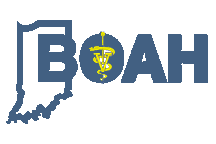Tuberculosis
Tuberculosis is a major respiratory disease of man and animals. There are three main readily identified organisms. Mycobacteria tuberculosis occurs primarily in humans and primates. Mycobacteria bovis is the cause of tuberculosis in cattle, bison, elk, deer and other ruminants. Mycobacteria bovis can also infect humans. It is a serious infection in animals and humans. Mycobacteria avium infects birds and sometimes pigs, cattle, sheep, deer, cats and dogs. Inhalation of infected droplets of moisture from other infected animals is the primary route of spread. This method is especially important in animals housed or in over-crowded situations. The infection can also occur through the milk to progeny. Pasteurization of milk prevents spread to humans if infection should occur in dairy cattle.
Exposure: Over-crowded facilities, introduction of new animals.
Examples: Aerosol spread of bacteria through sneezing, coughing; also nose-to-nose contact.
Biosecurity Control Points:
Testing of new herd additions.
Inquire about herd health history before purchases.
Brucellosis
Brucellosis is primarily a disease of the reproductive tract, especially in females. It spreads when infected animals make contact with susceptible animals. The organism is also spread by body fluids of infected animals, including milk and urine. The greatest number of brucella organisms is shed at calving. Bulls have a lower rate of infection. The infection spreads rapidly in unvaccinated cattle, usually ending in abortion. Cows that abort and return to normal are still spreading the organism throughout the herd. Infected animals may have retained placenta or reduced milk production. Brucellosis is caused by Brucella abortus in cattle, bison, deer, elk and other ruminants. After aborting, some cases will recover and others will not. The variable response depends upon what stage of gestation the animal became infected.
Exposure: Contact with infected animals; new herd additions
Examples: Contact with bodily fluids, including milk, urine, birthing fluids
Biosecurity Control Points:
Vaccinate according to state protocols.
Quarantine and observe new herd additions.
Test new animals before introducing to herd.
Inquire about source herd health status.
Chronic Wasting Disease
Chronic Wasting Disease (CWD) occurs in elk, mule deer and white-tailed deer. CWD is classified as a transmissible spongiform encephalopathy and has been reported in both wild and captive populations. Infected animals usually show a slow but progressive debilitation resulting in death. Clinical signs include respiratory infection, avoid interaction, blank facial expression, walk in patterns, anxious, nervousness, eat extra grain and no hay, excessive salivation, grinding teeth and increased drinking and urination.
Exposure: Little is known about CWD's mode of transmission.
Biosecurity Control Points
Purchase animals only from monitored herds under an official certification program.
Prevent contact with/exposure to wild cervids.
